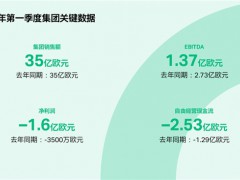據(jù)油價(jià)網(wǎng)2月18日消息稱,美國(guó)能源信息署(EIA)周五表示,繼2020年成為石油凈出口國(guó)的歷史性轉(zhuǎn)變后,較高的原油凈進(jìn)口量將使美國(guó)今年再次成為石油凈進(jìn)口國(guó),就像 2021 年一樣。
石油凈進(jìn)口國(guó)是指進(jìn)口原油和成品油多于出口原油和成品油的國(guó)家。
雖然美國(guó)十多年來(lái)一直是石油產(chǎn)品凈出口國(guó),但它一直是原油凈進(jìn)口國(guó),也就是說(shuō),它進(jìn)口的原油多于出口的原油。
2020年,美國(guó)成為石油凈出口國(guó),原油和石油產(chǎn)品貿(mào)易總量標(biāo)志著歷史性的轉(zhuǎn)變。EIA在 2019 年 9 月表示,按月計(jì)算,美國(guó)的原油和石油產(chǎn)品出口量超過(guò)了進(jìn)口量——這是自1973年開始月度記錄以來(lái),美國(guó)首次成為石油凈出口國(guó)。
EIA今天表示,2020年,全球石油需求的暴跌和低油價(jià)取消了石油出口國(guó)提高產(chǎn)量的激勵(lì)措施,這使得美國(guó)2020年的石油出口比過(guò)去更多。
政府補(bǔ)充說(shuō),同樣在 2020 年,美國(guó)原油進(jìn)出口之差降至至少 1985 年以來(lái)的最低點(diǎn)。隨著 2021 年消費(fèi)量的增加,原油凈進(jìn)口量增加了 19%,達(dá)到平均每天 320 萬(wàn)桶 (bpd)。
美國(guó)今年的原油進(jìn)口量將繼續(xù)高于出口量,預(yù)計(jì)年均凈進(jìn)口量為 390 萬(wàn)桶/日。美國(guó)政府表示,如果 EIA 預(yù)測(cè) 2023 年美國(guó)原油產(chǎn)量達(dá)到創(chuàng)紀(jì)錄的 1260 萬(wàn)桶/日,那么明年美國(guó)原油凈進(jìn)口量將降至 340 萬(wàn)桶/日。
朱佳妮 摘譯自 油價(jià)網(wǎng)
原文如下:
The U.S. Will Be A Net Oil importer In 2022
Higher net crude oil imports are set to make the United States a net petroleum importer this year again, as in 2021, after a historic shift of being a net petroleum exporter in 2020, the U.S. Energy Information Administration (EIA) said on Friday.
A net petroleum importer is a country that imports more crude oil and refined products than the crude and products it exports.
While the U.S. has been a net petroleum products exporter for more than a decade, it has always been a net crude oil importer, that is, it imports more crude than it exports.
The total crude and petroleum products trade marked a historic shift in 2020 when the U.S. became a net petroleum exporter. On a monthly basis, it was in September 2019 when the United States exported more crude oil and petroleum products than it imported—the first month in which America was a net petroleum exporter since monthly records began in 1973, the EIA said at the end of 2019.
In 2020, the plunge in global oil demand and the low oil prices that removed incentives for petroleum-exporting countries to raise production allowed the United States to export more petroleum in 2020 than it had in the past, the EIA said today.
Also in 2020, the difference between U.S. crude oil imports and exports fell to its lowest point since at least 1985, the administration added. With rising consumption in 2021, net crude oil imports increased by 19 percent to an average of 3.2 million barrels per day (bpd).
The U.S. will continue to import more crude than it exports this year, with net imports expected at an annual average of 3.9 million bpd. If EIA forecasts of a record-high annual U.S. crude oil production of 12.6 million bpd in 2023 pan out, the U.S. net crude imports would drop to 3.4 million bpd next year, the administration said.
免責(zé)聲明:本網(wǎng)轉(zhuǎn)載自其它媒體的文章及圖片,目的在于弘揚(yáng)石化精神,傳遞更多石化信息,宣傳國(guó)家石化產(chǎn)業(yè)政策,展示國(guó)家石化產(chǎn)業(yè)形象,參與國(guó)際石化產(chǎn)業(yè)輿論競(jìng)爭(zhēng),提高國(guó)際石化產(chǎn)業(yè)話語(yǔ)權(quán),并不代表本網(wǎng)贊同其觀點(diǎn)和對(duì)其真實(shí)性負(fù)責(zé),在此我們謹(jǐn)向原作者和原媒體致以崇高敬意。如果您認(rèn)為本站文章及圖片侵犯了您的版權(quán),請(qǐng)與我們聯(lián)系,我們將第一時(shí)間刪除。







